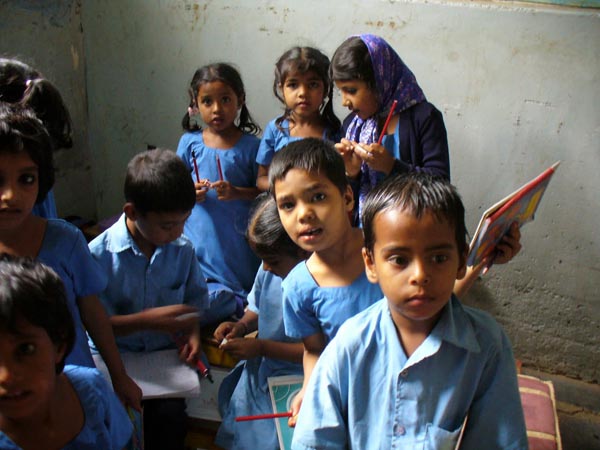
‘Parents think there are more opportunities if children study English’
Despite all the talk of promoting Kannada language, there has been a sharp drop in students getting admitted to Kannada medium schools, in Udupi district in the last 15 years.
As per the information provided by the Department of Public Instruction, in 1998, just after the formation of Udupi district, there were 579 Kannada medium government primary schools with 91,298 students. But in 2003, though the number of government primary schools went up to 604, the number of students fell to 83,913.
Again in 2013, though the number of Kannada medium government primary schools increased to 612 in the district, the number of students dropped to 55,520.
Even as the students in the Kannada medium were dropping, the students seeking entry to English medium unaided schools in the district increased.
There were 52 unaided schools with 10,946 students in 1998. The number of unaided schools went up to 70 with 18,641 students in 2003. In 2013, the number of unaided schools increased to 125 with 44,719 students.
In fact, so pathetic is the state of affairs, that as many as 201 Kannada medium government schools have less than 30 students in the district. For instance, the Anjar Government Higher Primary School at Ontibettu village near Hiriyadka, has only five students.
The State government has taken several steps to make Kannada medium schools attractive. “We provide free mid-day meal, free uniforms, free bicycles and free textbooks for the students in all Kannada medium schools. Even the teacher-student ratio in government schools is much better than private schools,” said Ashok Kamath, Education Officer in the Department of Public Instruction.
But there are various reasons for the drop not just in the district but also in the State. According to Mahabaleshwar Rao, Principal of Dr. T.M.A. Pai College of Education, parents thought that there were more job opportunities for their children if they studied English.
“There are more jobs in the private sector than government sector. The IT and BT sectors prefer candidates proficient in English. People also consider it a matter of prestige to send their children to English medium schools,” he said.
‘Easier for PU’
According to Nirmala B., Headmistress of Volakadu Government Composite High School, Udupi, more than students, it was the parents who insisted on English medium because they felt it would easier for their children to study in PUC.
Of the 240 students admitted to Class 8 at the Volakadu Government Composite High School in 2013-14, 195 students opted for English medium, while the remaining 45 opted for Kannada medium this year. This year (2014-15) of the 237 admitted for Class 8, again 195 students opted for English medium, while only 42 chose Kannada medium in the school.
“A majority of students getting admitted to Kannada medium are children of migrant labourers from north Karnataka,” Ms. Nirmala said.
According to an official in the Department of Public Instruction, there was a fall in the standards of teachers being appointed to the Kannada medium schools. There should be supervision of teachers. “Besides, if an additional teacher had to be appointed in any government school, the process took nearly four years. Such delays reduce the confidence of parents in the schools,” he said.
Is there any hope for the Kannada medium schools then? Dr. Rao proposes a radical solution. “The government should enact a legislation making it compulsory to reserve a certain percentage of jobs for students who have studied in Kannada medium till Class 10 in both government and private sectors. Besides, there should also be a change in the mindset of the society towards regional languages,” he said.


